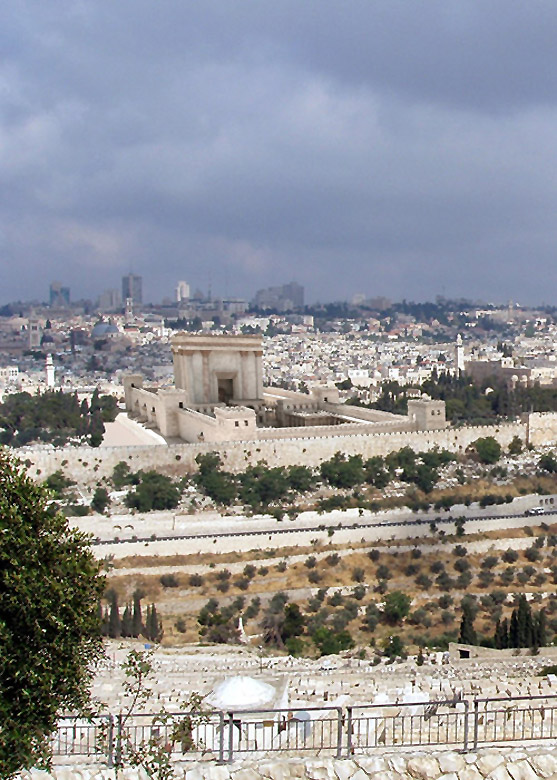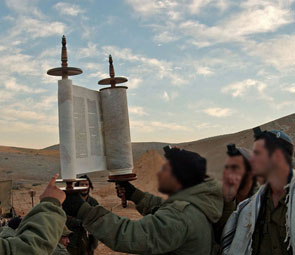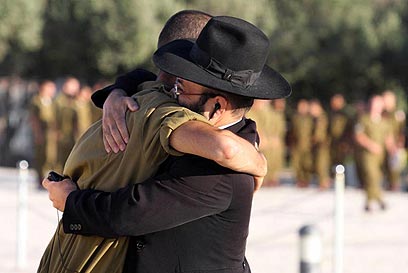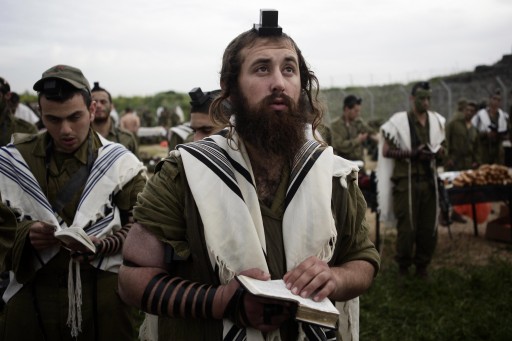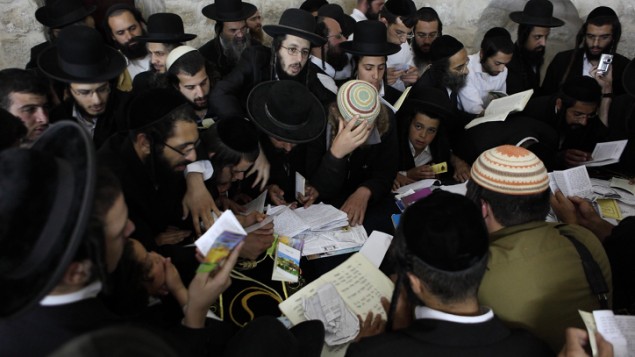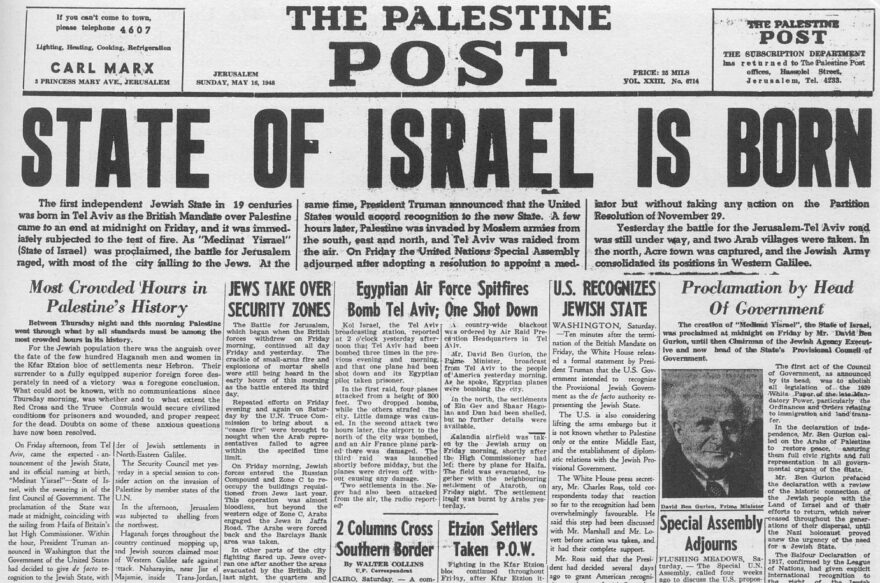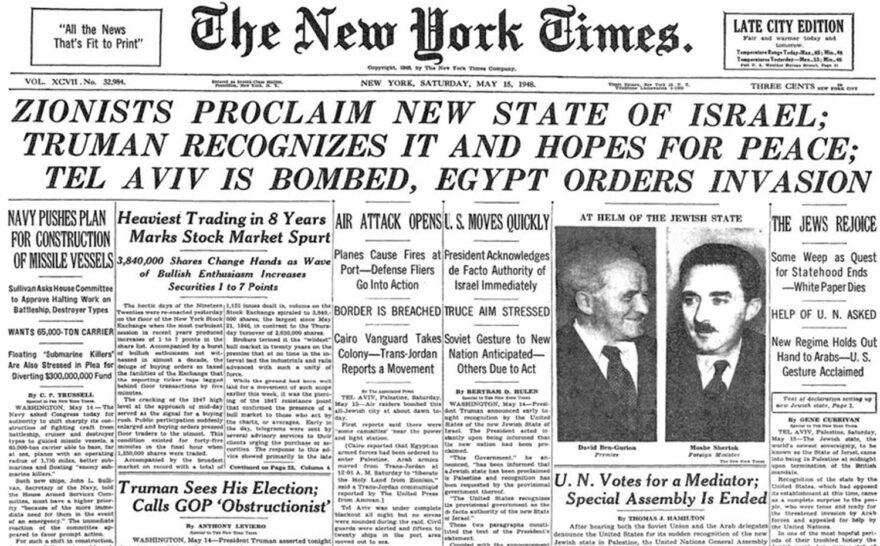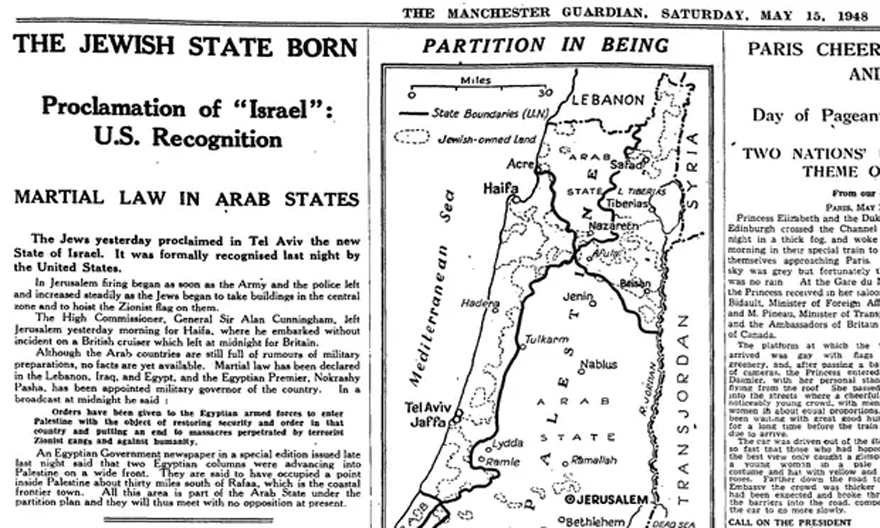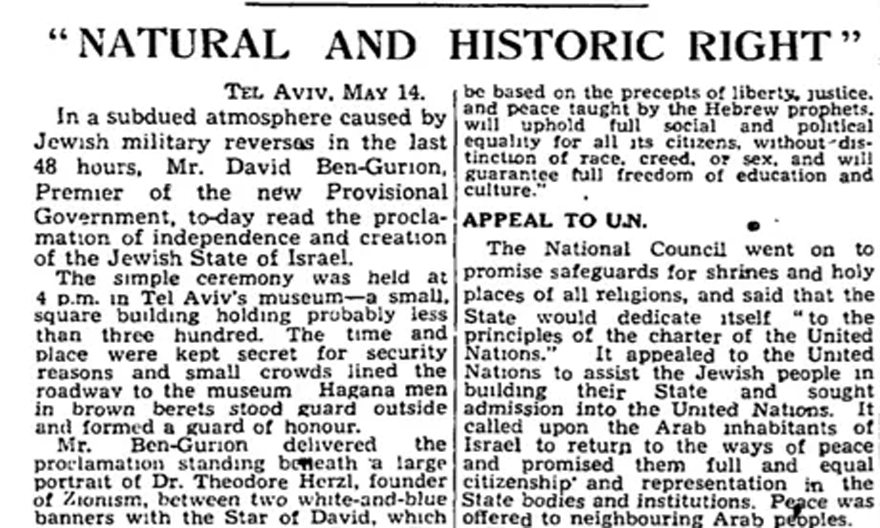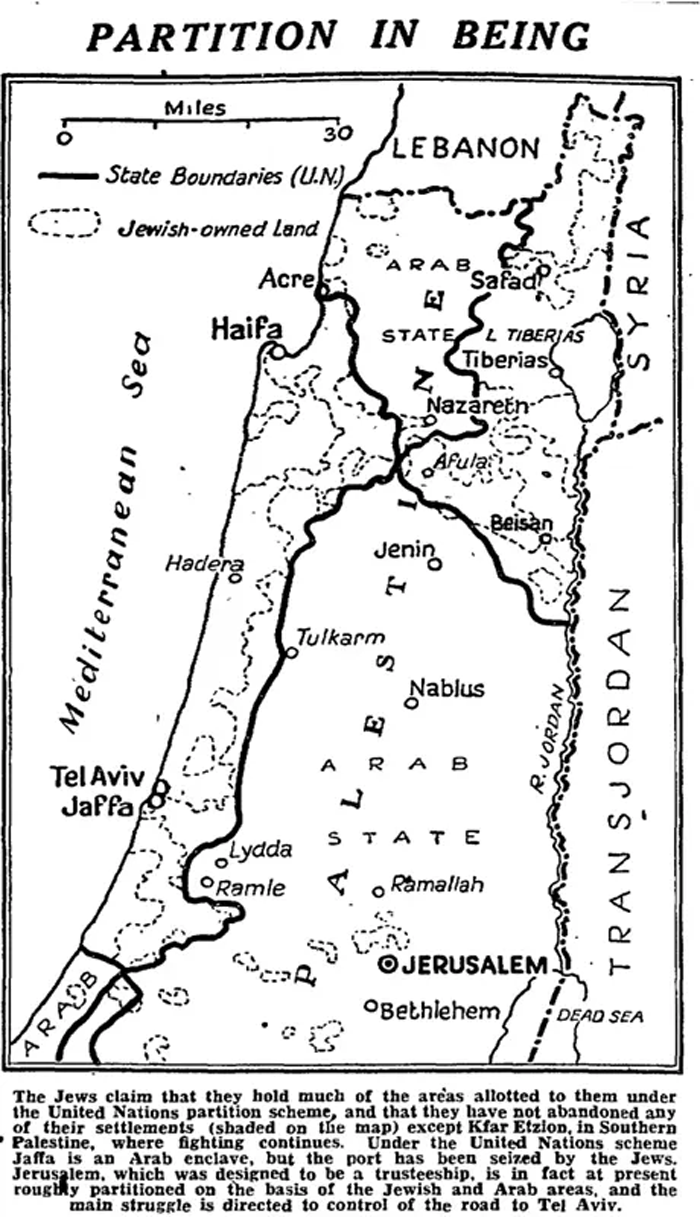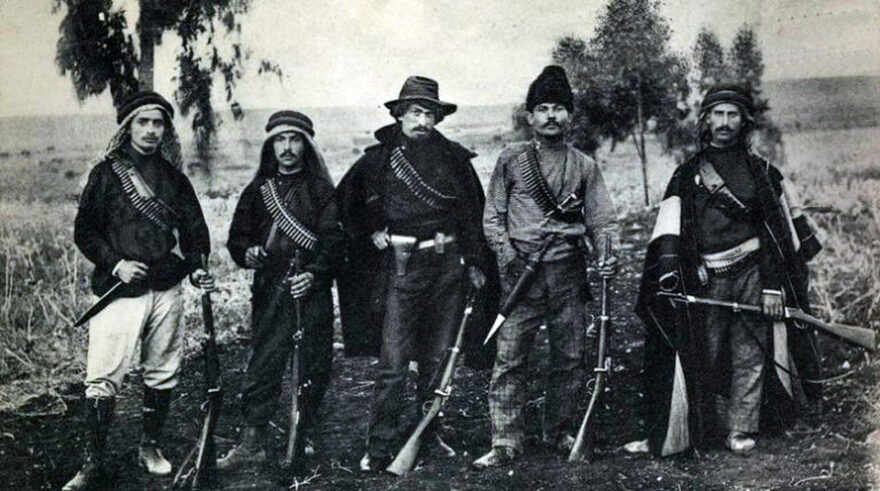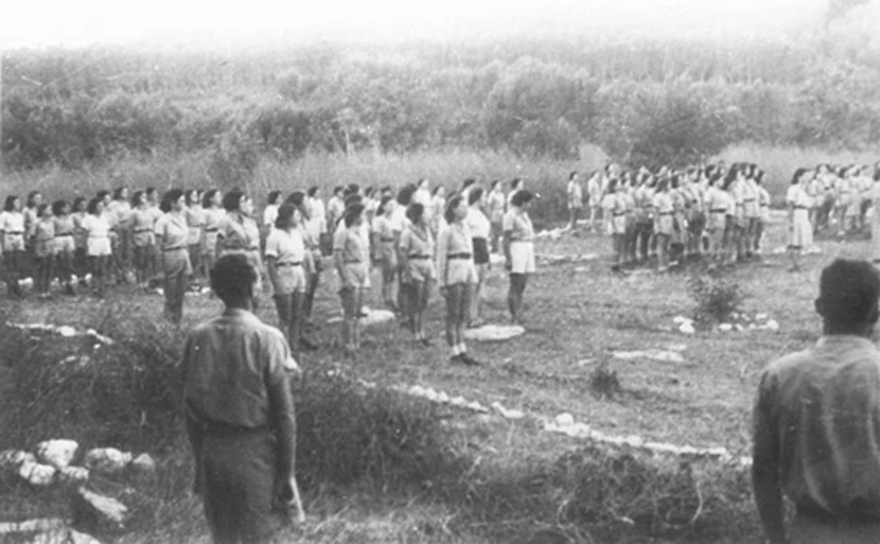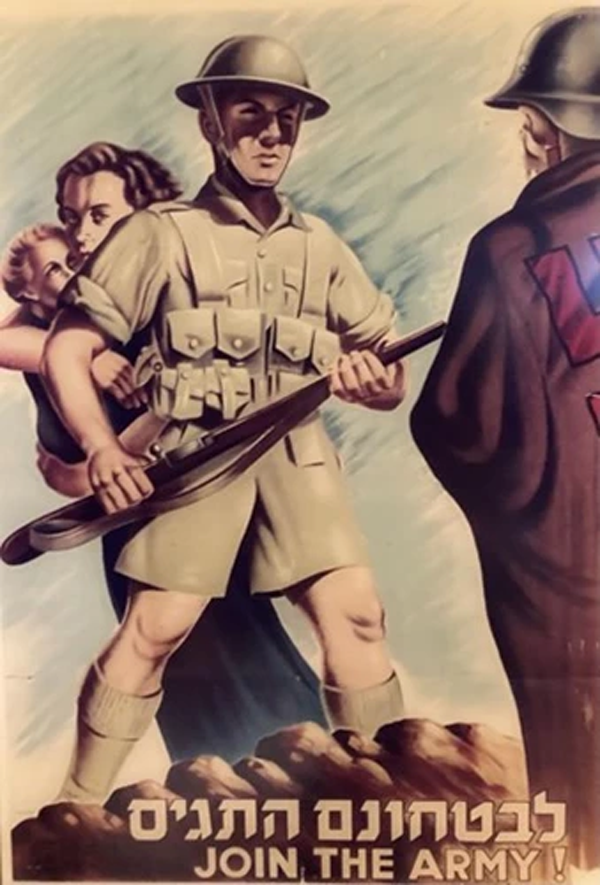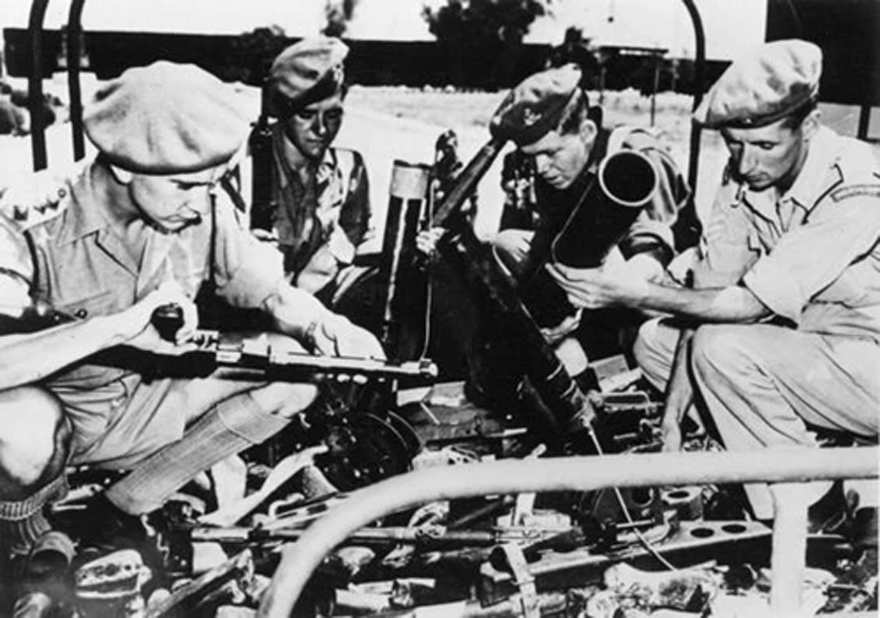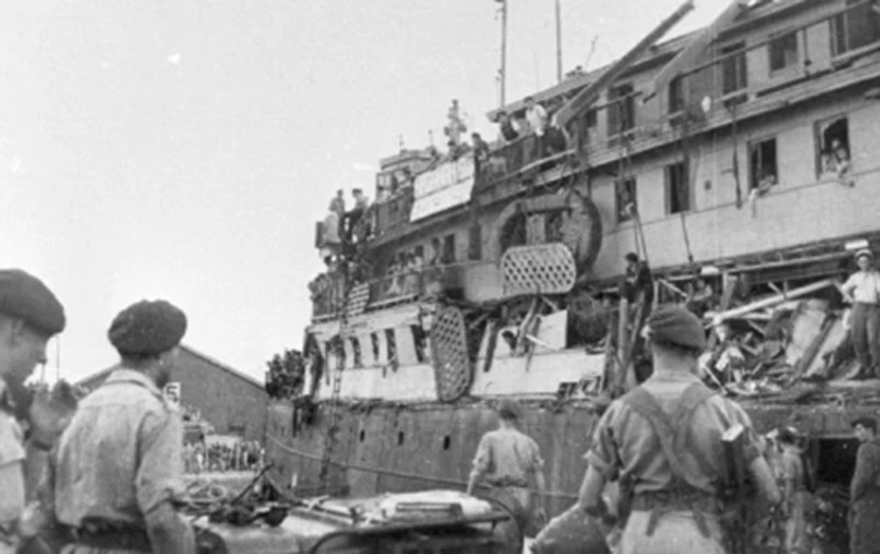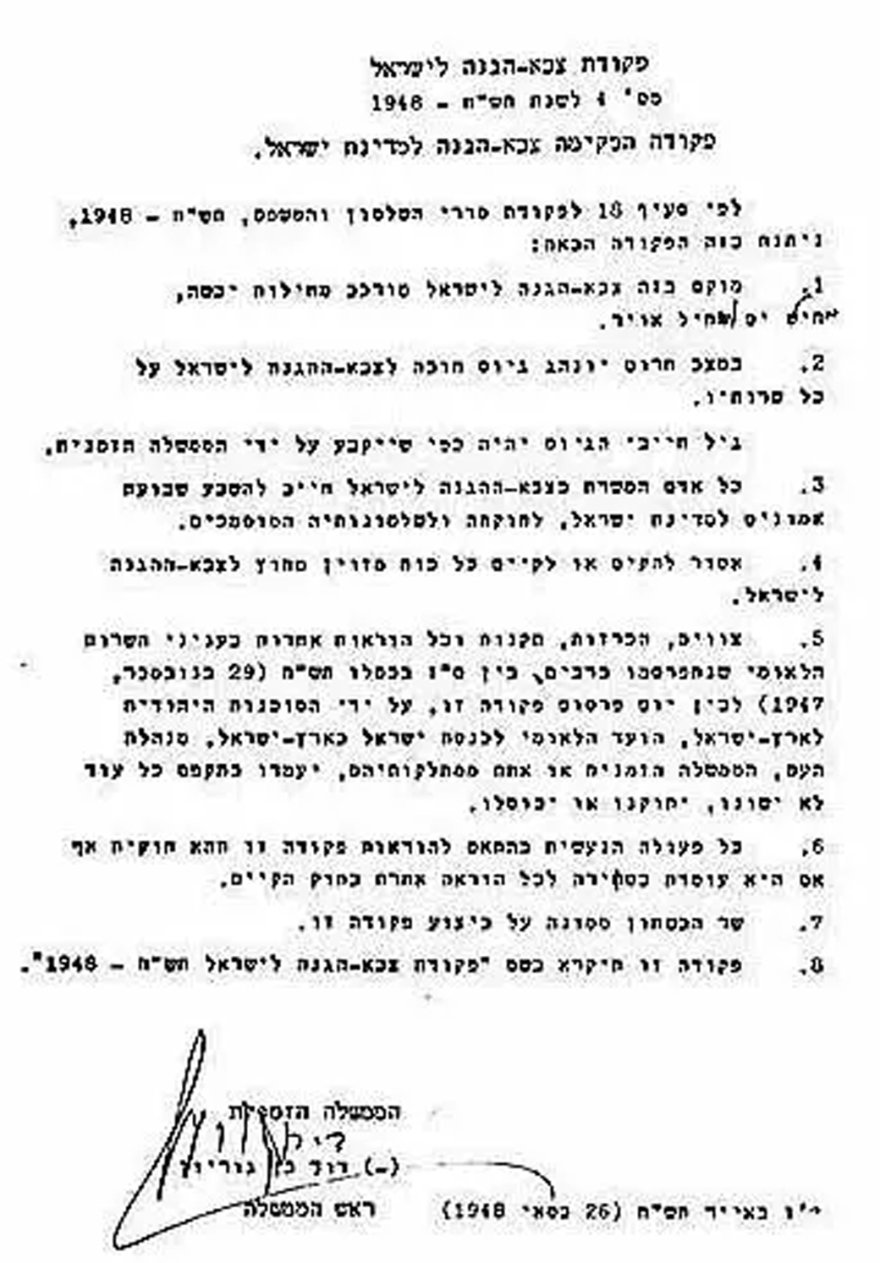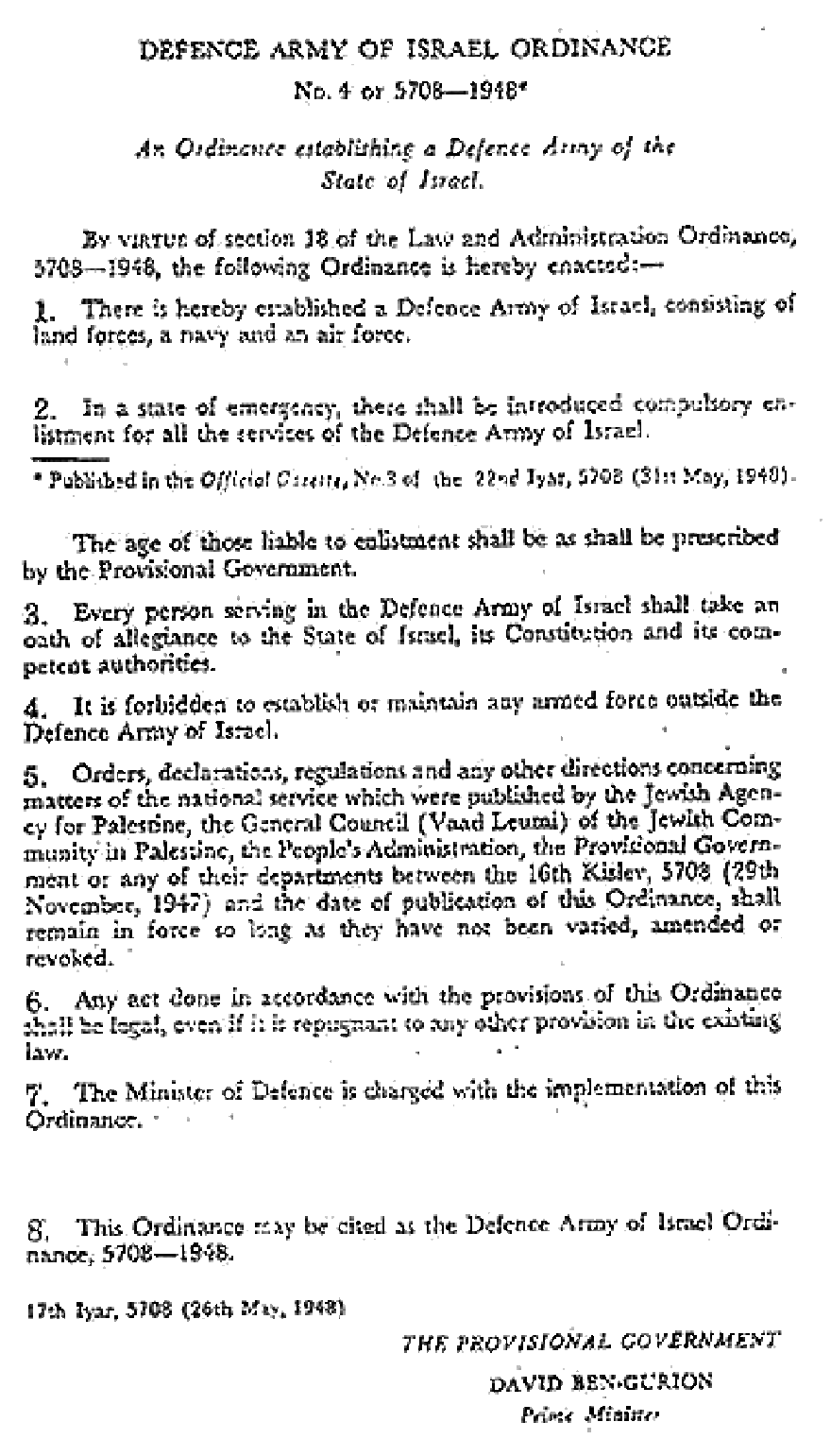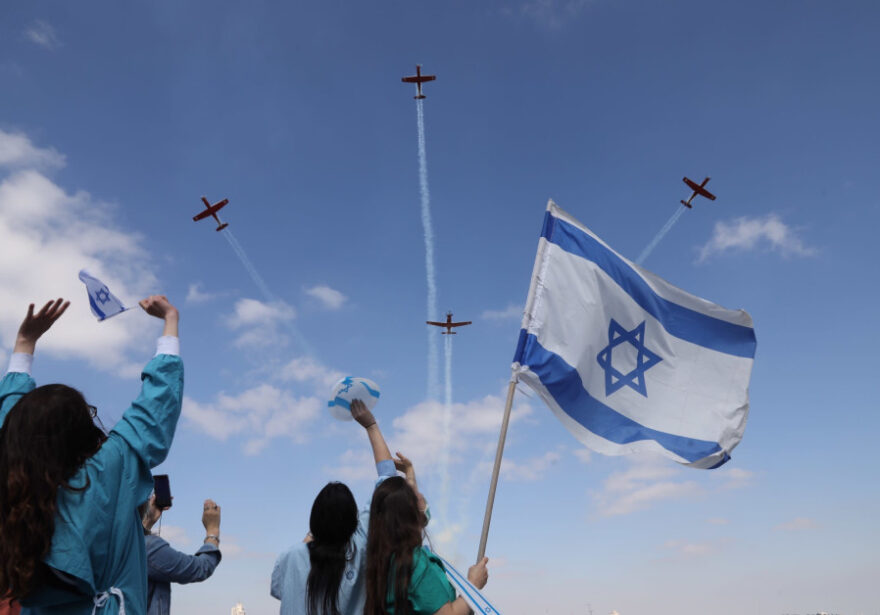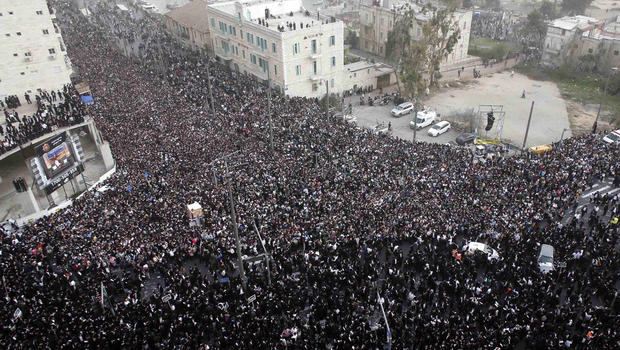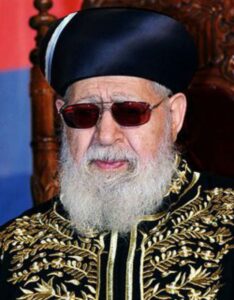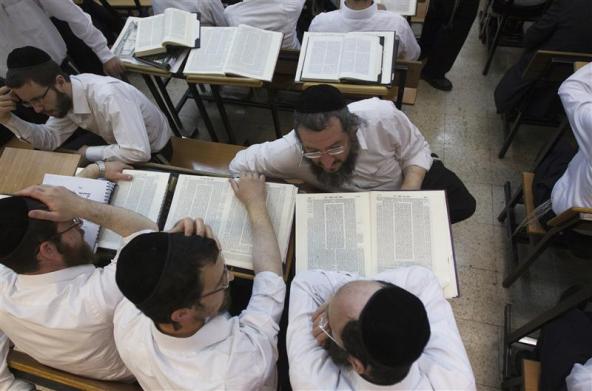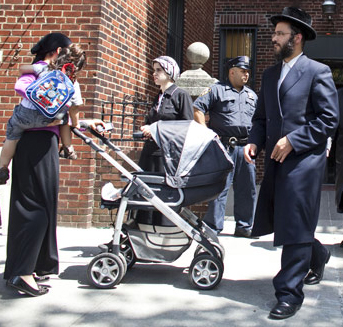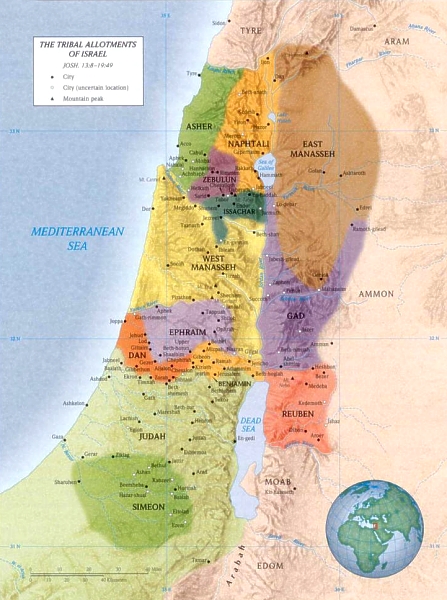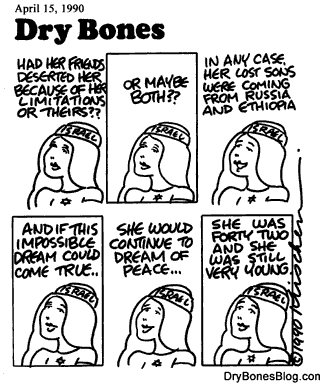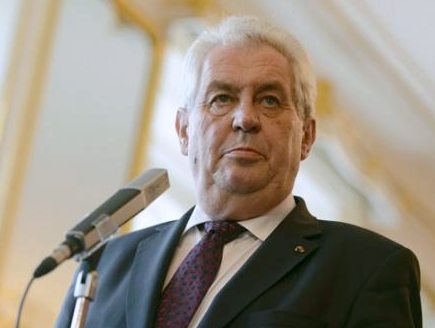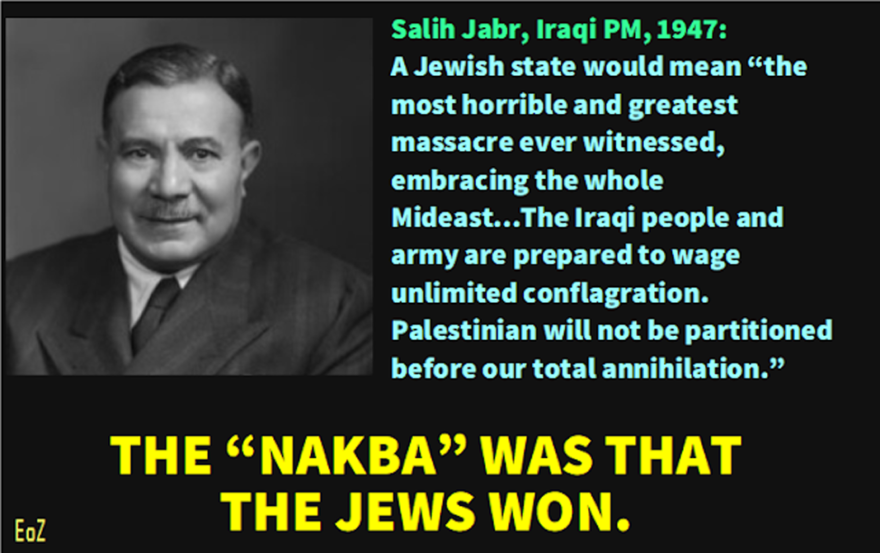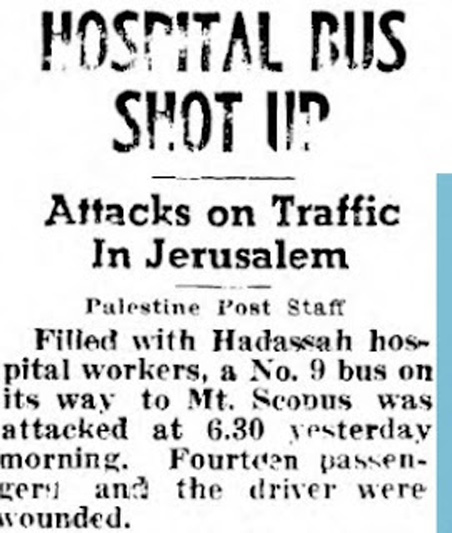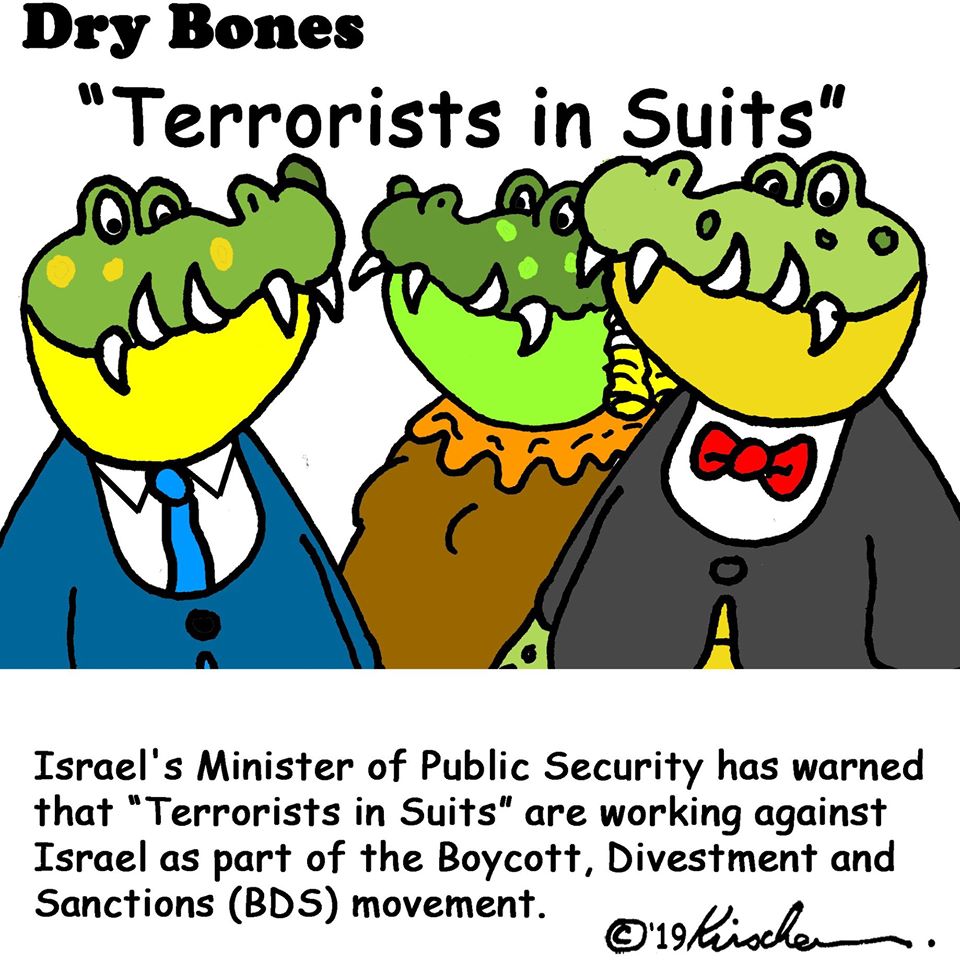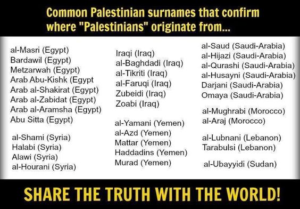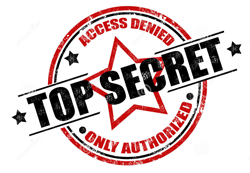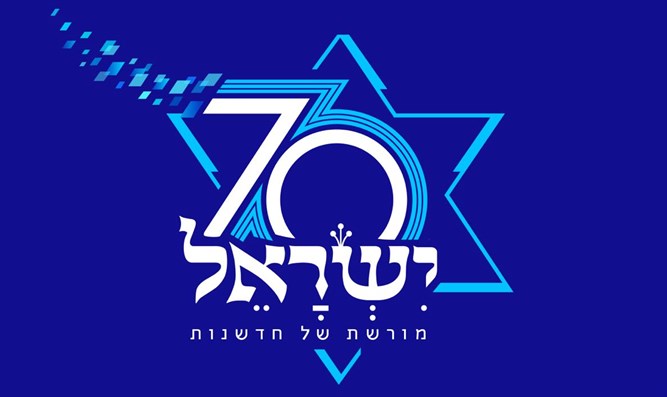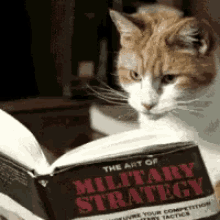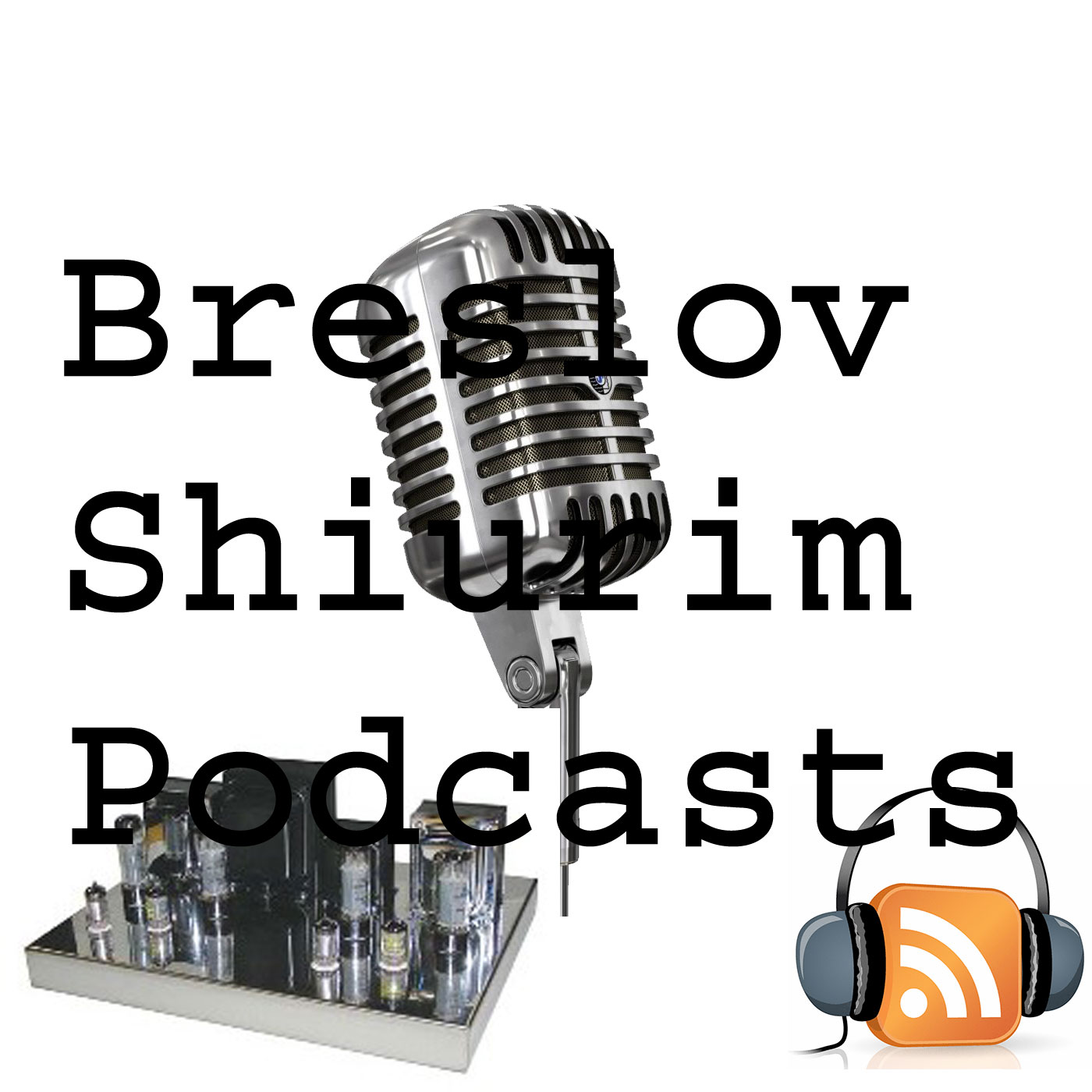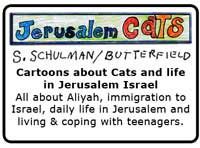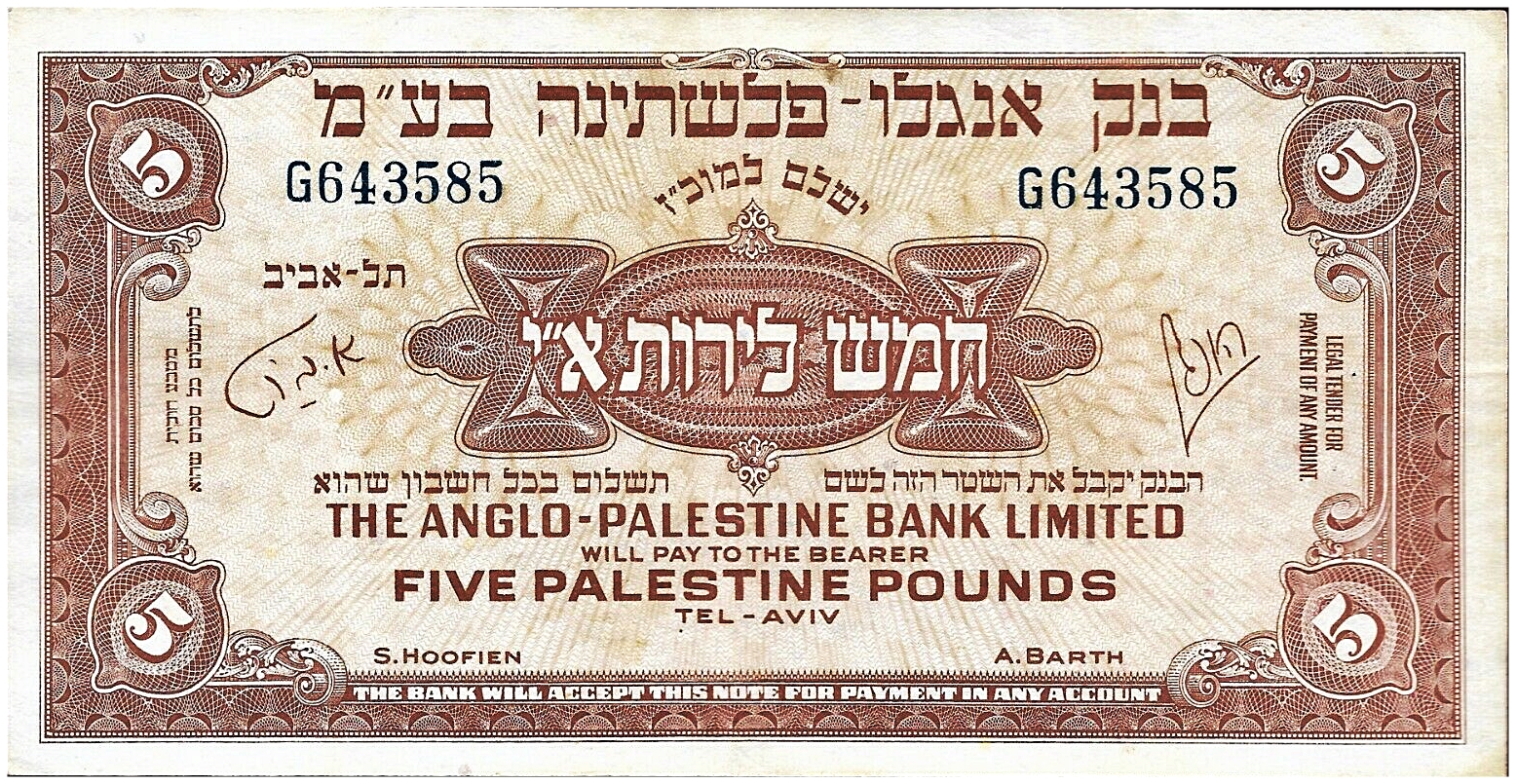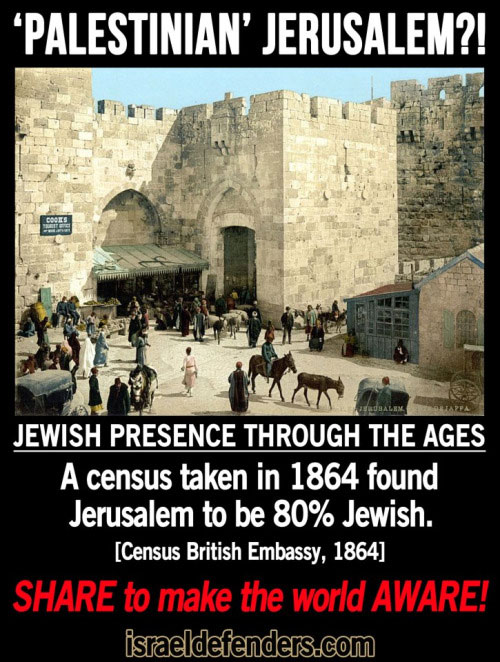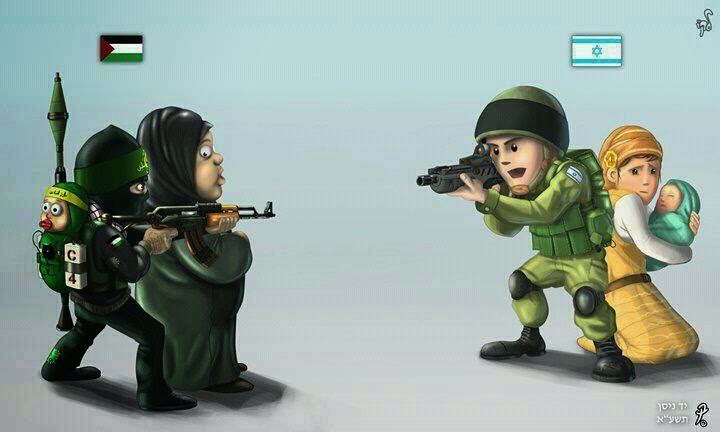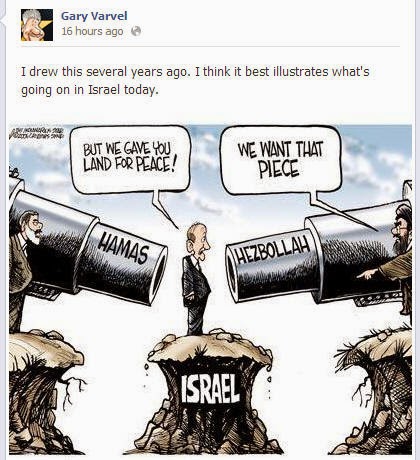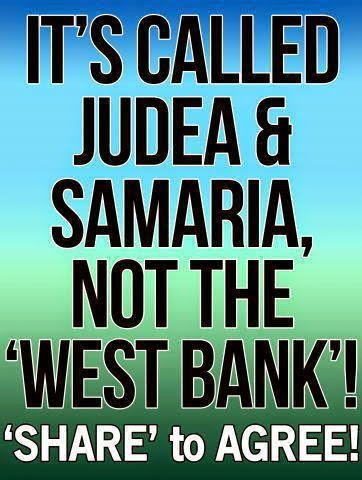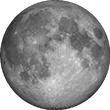Independence Day (Hebrew: יום העצמאות Yom Ha’atzmaut, lit. “Day of Independence”) is the national day of Israel, commemorating the Israeli Declaration of Independence in 1948. The day is marked by official and unofficial ceremonies and observances.Because Israel declared independence on 14 May 1948, the 5th of Iyar (ה’ באייר) , Yom Ha’atzmaut was originally celebrated on that date. However, to avoid Sabbath desecration, it may be commemorated one or two days before or after the 5th of Iyar if it falls too close to the Jewish Sabbath. Yom Hazikaron, the Israeli Fallen Soldiers and Victims of Terrorism Remembrance Day is always scheduled for the day preceding Independence Day.In the Hebrew calendar, days begin in the evening.
|
|
To the true Heroes and leaders of Am Israel |
Nahal Haredi was founded on the premise that physical strength alone is not enough – the spirit of Torah and Mitzvot must underlie all that is achieved. The Nahal provides religious men who seek to contribute to Israel’s military defense with a framework for personal and professional achievement that in every way promotes a Torah-true lifestyle.Nahal Haredi was created in 1999 by a group of rabbis in cooperation with the Israel Defense Forces and the Ministry of Defense, as a venue for young men who wish to serve the national interests of Eretz Yisrael while adhering to the highest religious standards. From a small unit of 30 soldiers, Nahal Haredi has become an IDF battalion of close to 1,000 troops, and now aims to reach the requisite threshold for designation as a fully operative infantry brigade. Nahal Haredi continues to develop and implement programming designed to provide military, educational, and economic opportunity to Israel’s growing Haredi community. |
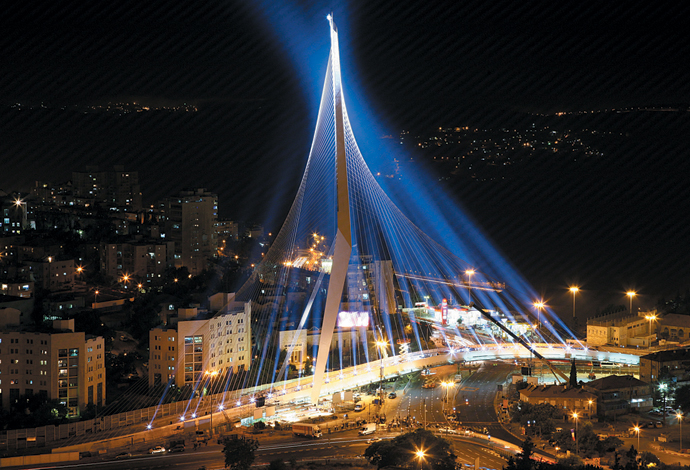 The Jerusalem Chords Bridge or Jerusalem Bridge of Strings גשר המיתרים, Gesher HaMeitarim, also called the Jerusalem Light Rail Bridge is a cantilever spar cable-stayed bridge at the entrance to the city of Jerusalem, Israel, designed by the Spanish architect and engineer Santiago Calatrava. The bridge is used by Jerusalem Light Rail’s Red Line, Incorporated in the structure is a glass-sided pedestrian bridge enabling pedestrians to cross from Kiryat Moshe to the Jerusalem Central Bus Station. |
|
Ani Maamin – Mordechai Shapiro Single |
|
Israel’s Declaration of IndependenceDeclaration of Independence of the State of Israel (English subtitles)
From the archive: the establishment of Israel – May 1948The new state of Israel was proclaimed in Tel Aviv on 14 May 1948. See how the Manchester Guardian covered the story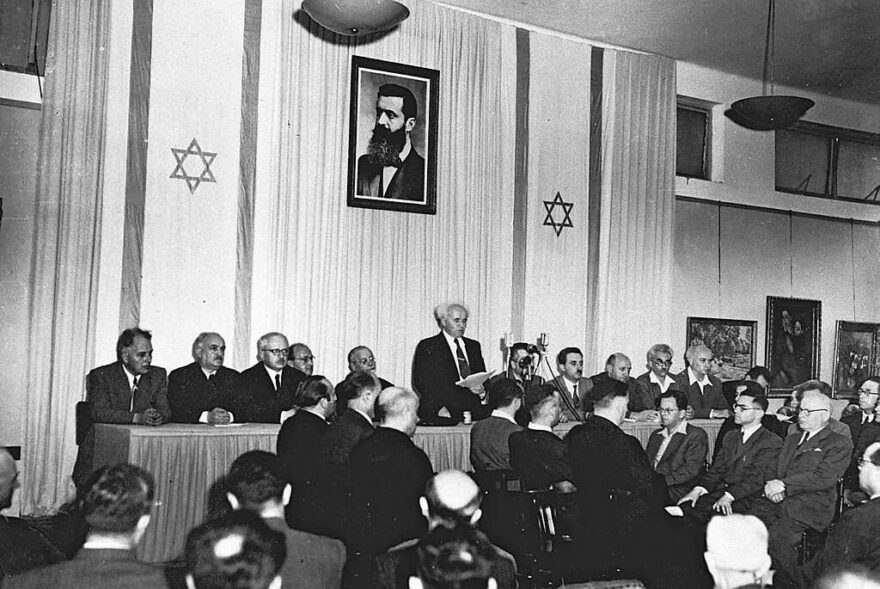 David Ben Gurion reads out the proclamation of independence and creation of the Jewish State of Israel, 1948. Richard Nelsson 14 May 2012 16.42 BST https://www.theguardian.com/world/from-the-archive-blog/2012/may/14/archive-1948-establishment-israel-jewish-state The state of Israel was founded on 14 May 1948. The following day the Manchester Guardian reported David Ben Gurion’s proclamation of independence, his appointment as Prime Minister, and the reaction of other countries to the creation of the Jewish state. Manchester Guardian, 15 May 1948. Read the full article.Ben Gurion announced that his government’s first act was the revocation of the White Paper of 1939 limiting immigration, and of the mandatory’s restrictions on land sales. Manchester Guardian, 15 May 1948. Read the full article.How the United Nations partition scheme of the region looked was illustrated in a graphic. Manchester Guardian, 15 May 1948. Meanwhile, the paper’s leader column noted:
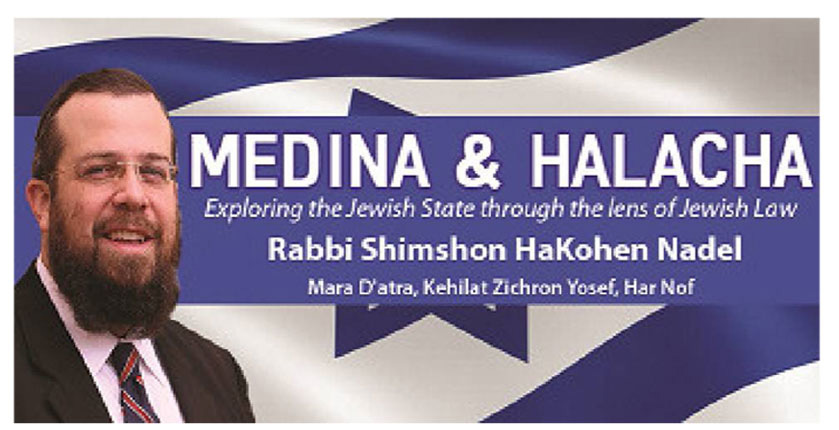 Medina & Halacha – Exploring the Jewish State through the lens of Jewish Law by Rabbi Shimshon HaKohen Nadel Medina & Halacha – Exploring the Jewish State through the lens of Jewish Law by Rabbi Shimshon HaKohen NadelIsrael’s Declaration of IndependenceTorah Tidbits #1327 – B’ha’aalot’cha – June 14-15 – 12 Sivan 5779 website: www.ttidbits.com Last week, MK Bezalel Yoel Smotrich of Ichud Leumi (who is seeking the post of Minister of Justice) said in an interview that Israel should “return to the way it was run in the days of King David and King Solomon.” He continued, “My desire long-term is that the State of Israel be run according to the Torah.”
In response, Prime Minister Binyamin Netanyahu announced that “the State of Israel will not be a Medinat Halacha.” I do not know if the Prime Minister is a reader of this column, but I would be very happy to sit down with him and discuss just what a Medinat Halacha might look like. Either at his home or mine.
The truth is, since the very birth of the State of Israel, this nascent Jewish Nation has struggled with its Jewish character: Would the Jewish State be a ‘Jewish’ state or a state ‘for the Jews’? A religious state, or just another Western Democracy? One vivid example of this ‘identity crisis’ is the disagreement and debate that took place over the text of Israel’s Declaration of Independence.
This met with much opposition by secular party leaders, and changes and additions were made by Zvi Berenson, the Histadrut trade union’s legal advisor and later a justice on Israel’s Supreme Court.
Berenson’s version was also problematic for some, and so in the days and weeks preceding the withdrawal from Palestine by British Mandatory authorities, a new draft was prepared by politicians, lawyers and writers (including Shai Agnon). The final draft of the Declaration of Independence was drafted by a small committee including David Ben-Gurion, Moshe Sharett, Rabbi Yehuda Leib Fishman- Maimon, and Aharon Zisling.
Rabbi Maimon, head of the Mizrachi party and later Israel’s first Minister of Religion, along with other Religious Zionist leaders, believed strongly that Israel’s Declaration of Independence should mention Hashem. After much opposition, Rabbi Maimon recommended using “Tzur Yisrael V’Go’alo – Rock of Israel and Redeemer”, an expression found in Tanach and our liturgy.
The Declaration of Independence begins by affirming the Jewish People’s ancestral and spiritual connection the land, but instead of the word “Torah”, uses “Book of Books”: “The Land of Israel was the birthplace of the Jewish people. Here their spiritual, religious and political identity was shaped. Here they first attained to statehood, created cultural values of national and universal significance and gave to the world the eternal Book of Books.” The Declaration concludes: “Placing our trust in the Rock of Israel, we affix our signatures to this proclamation at this session of the provisional Council of State, on the soil of the Homeland, in the city of Tel-Aviv, on this Erev Shabbat, the 5th day of Iyar 5708, 14 May 1948.”
Ben-Gurion was comfortable in using “Rock of Israel”, as he felt every individual can decide for himself what the “Rock of Israel” means to him. But it is clear from Tanach that “Rock of Israel” is an expression of our steadfast faith in Hashem as our rock, our strength, and our protector. On his deathbed, King David says, “The Rock of Israel has spoken to me: ‘Become a ruler over men; a righteous one, who rules through the fear of G-d'” (Shmuel Bet 23:3). “Rock of Israel” is a also mentioned in Yishayahu 30:29.
In Chana’s prayer, she recognizes “there is no Rock like our G-d” (Shmuel Alef 2:2). In Tehillim 18:3, Hashem is the “Rock in Whom I take shelter,” and in Tehillim 19:15 he is “my Rock, and my Redeemer”. In Tehillim 62:3, “He alone is my Rock and my Salvation,” and in Tehillim 73:26 Hashem is the “Rock of my heart.”
According to some, Rav Yitzchak HaLevi Herzog’s choice to begin the Prayer for the Welfare of the State of Israel with “Tzur Yisrael V’Go’alo” was no coincidence. His intention was to invoke Israel’s Declaration of Independence and imbue it with religious meaning.
Just hours after its final wording was decided, party leaders lined up to sign their names to the Declaration of Independence. Rabbi Yehuda Leib Fishman-Maimon added something small just above his signature: The Hebrew letters Bet, Ayin, Zayin, Hei, representing “Be’ezrat Hashem.” |
|
Ever Wondered How it All Started?The Origins of the Israel Defense ForcesYou know the names of our wars, our tanks, our tech… You read about our operational capabilities and our different units. But a military isn’t born overnight. These are the IDF’s origins:
1887 – ZionismThe end of the 19th century marked the start of a new movement––Zionism. Theodor Herzl, the founder of the Zionist movement, called for Jews across the globe to come together and form a national home for the Jewish people.
Back then, the Land of Israel was part of the Ottoman Empire. It was populated mainly by Arabs from throughout the Middle East and Jewish communities in holy cities such as Jerusalem and Safed that had existed for centuries.
Inspired by Zionism and facing violent pogroms in eastern Europe, more and more Jews felt the need to escape to a place they could call their own. They came to Israel and established the first “Moshavot”––Jewish agricultural communities and towns.
As Jewish communities bloomed throughout the Land of Israel, the concept of “Hebrew Labor” became the cornerstone of Israel’s national revival process. By shaping a new society and building a country with their own hands, the Zionist movement was brought to life. At the time, the Jewish communities in the country would hire local Arabs to guard their homes, fields and plantations. However, Jewish pioneers aspired to take their security into their own hands. 1907 – Bar Giora and HaShomerA secret order called Bar Giora was formed in order to lead Hebrew Labor, train Jews in combat, build Jewish communities and secure Jewish towns. The ultimate goal was to create a defensive Jewish force. Bar Giora set up a farm in Sejera (modern-day Ilaniya) and then spread out to guard the entire town as well as their neighboring town, Mas’ha (Modern day Kfar Tavor). Following their success in Sejera and Mas’ha, the demand for Jewish security increased. The members of Bar Giora decided to focus their efforts solely on securing Jewish communities. Therefore, they founded a legal organization––as opposed to Bar Giora, which was underground––called HaShomer. Soon, HaShomer guarded Jewish communities all throughout the Land of Israel.
World War IIn 1917, in the midst of World War I, Jews volunteered to join the British Army to fight against the Ottoman Empire. They formed the Jewish Legion––the 38th to 42nd Battalions of the Royal Fusiliers in the British Army––and hoped that in exchange for their contribution, they would be credited in favor of establishing the State of Israel as the country of the Jewish people once a new world order was set at the end of the war. The Jewish Legion was the first Jewish military force of the modern era, with Jewish symbols and names and Hebrew as its spoken language. The existence of the five Jewish battalions gave proof of the potential power of the Jews as a nation. The military experience its soldiers gained, as well as their spirit, became the foundation of the Jewish underground resistances which would later operate across the Land of Israel.
Once World War I came to an end, the British gained control over the Land of Israel as part of the Sykes–Picot Agreement, which divided the Middle East between the British and French.
In 1917, The British Government published the Balfour Declaration, solidifying its support and recognizing the Land of Israel as the national home of the Jewish people. The number of Jews immigrating to the British Mandate of Palestine continued to grow. These new Jewish immigrants formed a new way of living––the Kibbutz.
Triggered by the fall of the Ottoman Empire, in 1919, Arabs increased their attacks on Jewish communities in the Galilee region. The most well-known event is the Battle of Tel Hai, when a Small Arab squad attacked the small Jewish community living there, resulting in the death of eight Jews. One of the fallen was Joseph Trumpeldor, a Zionist role model and national hero. 1920 – HaganahMeanwhile, HaShomer had been gaining members, including Eliyahu Golomb, David Ben-Gurion and Yitzhak Tabenkin, who argued that the guard should become a countrywide body. This caused controversy amongst HaShomer veterans, who aspired to maintain the selective and elitist tradition of the organization.
This led to HaShomer voluntarily disbanding, and the Haganah, a defensive organization open to all, was established. Based upon the principles of HaShomer and under the authority of the World Zionist Organization, the Haganah’s mission was to protect the Hebrew Yeshuv (the Jews who lived in the Land of Israel) from Arab attacks.
Almost immediately after the establishment of the Haganah began the Nabi Musa riots. Jewish homes were raided and attacked by Arabs. As the British Army stood to the side, the Haganah managed to evacuate around 300 Jews from the Old City of Jerusalem. The violence continued for four days. Once the situation deescalated, the British accused the Haganah of causing the riots and sent the Jewish soldiers to the Acre Prison.
Just a few months later, in May, 1921, the Jaffa riots occurred. Arabs attacked Jewish communities in Jaffa and throughout central Israel, killing 47 Jews. In 1929, a series of violent Arab massacres of Jewish communities took place. 133 Jews were brutally murdered as Arab mobs targeted ancient Jewish communities in holy cities such as Jerusalem, Safed, Hebron, and Nablus. Jewish families who had lived there for centuries were wiped out while British forces stood idly by. 1931 – EtzelFollowing these horrific events, a group of Haganah commanders split and formed an organization called the Etzel. The Etzel abandoned the Haganah’s defensive approach and advocated for a more offensive and deterrent one, demanding decisive action against Arab aggression and British indifference. 1936 – The Arab RevoltMeanwhile, in Europe, the Nazi party was rising to power. More and more Jews frantically fled Europe and immigrated to the British Mandate of Palestine. This resulted in the Arab revolt in Mandatory Palestine, during which Arabs committed acts of terror against British forces and their representatives as well as attacks on Jews and their property. These events were more brutal than the previous riots both in scope and intensity.
The Haganah’s policy was “Havlagah – Restraint”.
The Haganah headquarters received real-time reports from various agents in the Yeshuv, using an underground radio system and Morse code in order to gather intelligence and thwart Arab attacks. However, as the attacks increased, the Haganah decided to expand their fighting front. They established POSH (Field Companies), the elite commando unit of the Haganah. Its commander, Yitzhak Sadeh, developed offensive combat techniques: not to “stay behind the fence” but to operate at nighttime, conduct squad ambushes, all the while familiarizing themselves with the terrain.
Concurrently, the Haganah began to collaborate with the British Mandate and formed the PALAM, the “Special Night Squads”, an elite unit under the command of Cpt. Orde Wingate, a British officer. Cpt. Wingate selected his recruits personally. He developed a unique combat method for the unit, specializing in guerrilla warfare, memorizing the land’s topography while forming small, mobile striking units capable of taking down Arab terror squads.
When the Arab revolt ended in 1939, the Yeshuv and the Haganah had only grown stronger. With new, fortified Jewish communities and kibbutzim, the organizations were able to expand their combat capabilities via their special units, PALAM and POSH. The POSH was later turned into HISH (Field Corps), a young guard who trained to protect the Yeshuv and its people, and HIM (Guard Corps) a guard who defended Jewish communities and towns. World War II, Lehi and PalmachSeveral months later, the British government issued the White Paper of 1939, limiting Jewish immigration to the Land of Israel almost entirely. The Holocaust was just beginning, and more than ever, the Jewish people needed a safe place to go. Thousands of Jews who managed to escape the Nazis came by boat to Mandatory Palestine for survival––only to be turned back at its shores. While the Jewish people supported British efforts to fight against the Nazis, they could not stand by while desperate Jewish refugees were denied entry into the country.
“We will fight the White Paper as if there is no war against Hitler,” declared David Ben Gurion, prominent Haganah leader and Israel’s first prime minister, “and we will fight Hitler as if there is no White Paper.”
More than 40,000 Jews enlisted into the British Army during World War II to fight against the Nazis. Throughout the war, Jews served in various positions, including the famous Jewish Parachutists, made up of 37 brave men and women who volunteered to parachute into Nazi-occupied Europe in order to gather intelligence, rescue Allied forces who had fallen into enemy territory, and try to save Jews in Europe.
Meanwhile, the Etzel had internal disagreements over whether or not they should cease fire with the British and assist them during the war or continue to act in defiance of the White Paper. Eventually, those who opposed the British split and formed a new organization—the Lehi. It was a small organization, but it carried out daring missions against British rule.
Poster calling for Jews to enlist into the British Army News of the Nazis’ plan to conquer the Middle East spread rapidly as France, which controlled Lebanon and Syria, came under pro-Nazi Vichy’s rule, and German Gen. Rommel made his way through north Africa’s shores to the Suez Canal.
This resulted in the establishment of the Palmach, the Haganah’s official military branch, to supplement the HISH and HIM. The Palmach was created as a force to protect and defend the Jewish people in Israel in the event of a Nazi invasion. It was an integral part of the Haganah. Every Palmach member was loyal to the Haganah as well.
The British initially sponsored the Palmach and provided its members with weapons as well as military training. The Palmach operated using methods of guerrilla warfare, combat patrols, reconnaissance, strike and sabotage. They even had a “German Platoon”, in which German-speaking soldiers impersonated Nazi military officers, trained to operate German weapons, completed intensive exercises, and studied German military history and strategy.
However, after the British victory over Gen. Rommel in Africa in the Second Battle of El Alamein, the British no longer saw the need for the Palmach’s existence and cut off all funding and assistance.
The organization was forced to go underground and support itself through work in the kibbutzim—each Palmach platoon was assigned a kibbutz to live on, where they were provided with food, housing and other resources. In return, the platoons worked on the kibbutz for half of the month and trained for combat during the other half. This combination of agricultural work and training created a combat-ready, self-sufficient force.
The Palmach managed to establish the “Palyam” (naval companies) and the “Sha” (air force service), as well as special units such as the “Sachar”, known as the Arab Platoon, which trained Arabic-speaking Jews to gather intelligence and secret information in the Middle East. Known for conducting informal social activities apart from training, its free spirit and high morale was the Palmach’s essence and source of strength.
At the time, most Yeshuv members wanted to join the Allies in the fight against the Nazis and be a part of an established, respected military rather than a newly formed paramilitary with limited resources. In order to convince Jews to join the Palmach, Yitzhak Sadeh, the Palmach’s first commander, insisted: “The Russian gun is carried by the Russian soldier, the English gun is carried by the English soldier, but friends, who will carry the Hebrew gun?”
The Jews and the British had a common enemy: the Nazis. Therefore, as long as Europe was occupied by the Nazis, the World Zionist Organization decided to refrain from using weapons against the British. However, the Etzel dismissed this decision in the last few months of the war; as news about the horrors of the Holocaust made its way overseas, the White Paper’s policy still kept Jews seeking refuge from immigrating to Mandatory Palestine. The Etzel announced their resumption of the armed struggle against British rule with the aim of expelling the British from the country and establishing an independent Jewish state instead.
That started “The Saison”––The Haganah and the Palmach’s fight against the Etzel in order to stop them from operating against the British Mandate. The Haganah began to track Etzel members and gather information to pass on to the British, sometimes even handing over Etzel members themselves. Despite rising tensions, all three organizations remained careful not to spark infighting, for they all had the same mission––to establish the State of Israel. 1945 – Jewish Resistance MovementImmediately after World War II, the Etzel, the Lehi, the Haganah and the Palmach all came together to form a united “Hebrew Resistance Movement”. Together, they organized wide-scale operations in order to bring Jewish immigrants safely to the Land of Israel. They broke into the Atlit internment camps and released all 200 Jewish immigrants and Holocaust survivors who were imprisoned there, and sabotaged British railways, ships, jets, airports and radar stations with which the British Army used to detect Jewish immigration ships.
One of their most well-known operations is “Night of the Bridges”. On the night of June 16th, 1946, the Jewish Resistance Movement destroyed ten bridges linking Mandatory Palestine to its neighboring countries––Lebanon, Syria, Jordan and Egypt––in order to sever the British Army’s strategic and economic ties.
In response, on June 29, 1946, the British implemented their plan to eliminate the Jewish resistance: Operation Agatha, also known as the “Black Shabbat”. The British seized Jewish cities, kibbutzim and towns, confiscated important documents, arrested thousands of members, and raided homes to find guns and weapons. The “Black Shabbat” constituted a significant blow to the Yeshuv. They swiftly planned to retaliate.
At the time, the King David Hotel in Jerusalem was known to be the headquarters of the British government in Israel. The Jewish Resistance Movement’s original plan was to plant explosives and destroy the hotel as a warning sign to the British, but after consulting with the World Zionist Organization, they cancelled the mission. However, the Etzel carried on with the mission on their own. Even though they called for the hotel to be evacuated, the British dismissed their warning. 91 people died in the attack—Jews, Arabs and British. The disaster sent a massive shock through the Hebrew Resistance Movement and led to its dissolution.
The Haganah’s weapons, found by the British in Kibbutz Yagur during the “Black Shabbat”, 1947 1947 – The Fight for Israel’s IndependenceAnd so, each organization resumed their previous mission––the Etzel and the Lehi continued to openly fight against the British while the Haganah and the Palmach focused on rescuing Jewish refugees and bringing them to Mandatory Palestine.
A turning point in the Haganah’s effort to save Jewish immigrants was when the British seized the Exodus 1947 illegal immigration ship, forcing thousands of Holocaust survivors seeking refuge in the Land of Israel to go back to Europe. This incident was covered heavily in the media. Members of the United Nations Special Committee on Palestine (UNSCOP) who were visiting Israel at the time witnessed the event, influencing them to recognize the necessity of a state for the Jewish People.
Exodus 1947 in Haifa’s harbor, after it was seized by the British On the 29th of November, 1947, the UN General Assembly approved Resolution 181, marking the end of the British Mandate of Palestine. This was a historic moment for the Jewish people. The Arab population within Mandatory Palestine immediately rejected the resolution and declared war on the Jews.
The Haganah, Etzel and Lehi joined together to fight for the existence of an independent Jewish state in their ancestral homeland.
The Haganah’s six brigades of HISH and three brigades of Palmach were the main entities acting as the backbone of the Yeshuv’s military force and played a key role in Israel’s War of Independence. Half of the fighting forces were also made up of “Gahal soldiers”––Jews recruited from Europe, most of them Holocaust survivors.
After six months of war, the Haganah decided to shift from their typical defensive approach to an increasingly offensive one that led them to a series of small victories, bringing the Yeshuv enough stability to arrive at this historic moment: On the 15th of May, 1948, David Ben Gurion declared Israel’s independence from the British Empire, based on Resolution 181 and the Partition Plan. Immediately after, Israel was attacked by six foreign Arab armies.
On the 26th of May, 1948, Ben Gurion ordered to disassemble all the underground resistance movements and form a new, united army called the Israel Defense Forces.
Despite being drastically outnumbered, the newly-formed IDF worked together to win the war. Israel emerged victorious, and, once and for all, the Jewish people began to build their nation, the State of Israel.
Since then, the IDF has transformed from a small, newly-formed army to one of the most respected and powerful militaries in the world. For over 73 years, the IDF has protected the Israeli people, and this was made possible because of the Haganah, the Palmach, and all the resistance movements who built the foundation for the IDF we know today. We owe it to them to continue their legacy and fight for Israel’s future. Defence Army of Israel Ordinance No. 4 – פקודת צבא הגנה לישראל מס’ 4
Israel Independence Day IAF jets fly over country for its 75th birthday |
|
Psalm 20:7 These trust in chariots and these in horses, but we call on the name of HASHEM our God. |
תהילים פרק כח: אֵ֣לֶּה בָ֭רֶכֶב וְאֵ֣לֶּה בַסּוּסִ֑ים וַֽאֲנַ֓חְנוּ בְּשֵׁם־יְהוָ֖ה אֱלֹהֵ֣ינוּ נַזְכִּֽיר׃ |
 Nefesh B’Nefesh: Live the Dream US & CAN 1-866-4-ALIYAH | UK 020-8150-6690 or 0800-085-2105 | Israel 02-659-5800 https://www.nbn.org.il/ info@nbn.org.il It’s time to come home! Nefesh B’Nefesh: Live the Dream 1-866-4-ALIYAH UK 0800-085-2105 Come home to the Land of Emuna |
|
Living The Dream – Nefesh B’Nefesh (hi-res) |
|
Thank you Yerushalayim Torah Academy for Girls! |
|
OU Israel Yom HaAtzmaut 70th Anniversary Celebration |
|
Nefesh B’Nefesh Yom Haatzmaut 2014: 66 Israeli Heroes Share a Powerful Message | NBN |
|
“Home” – Nefesh B’Nefesh Yom Ha’atzmaut 2017 |
|
We will continue no matter what happens with unity and love for Am Israel |
|
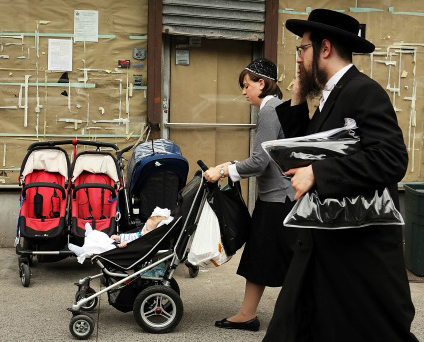
|
|
Our lands and tribal borders in the past |
|
גלי-עטרי-אין-לי-ארץ-אחרתגלי עטרי – אין לי ארץ אחרת Ein li eretz acheret (I have no other country)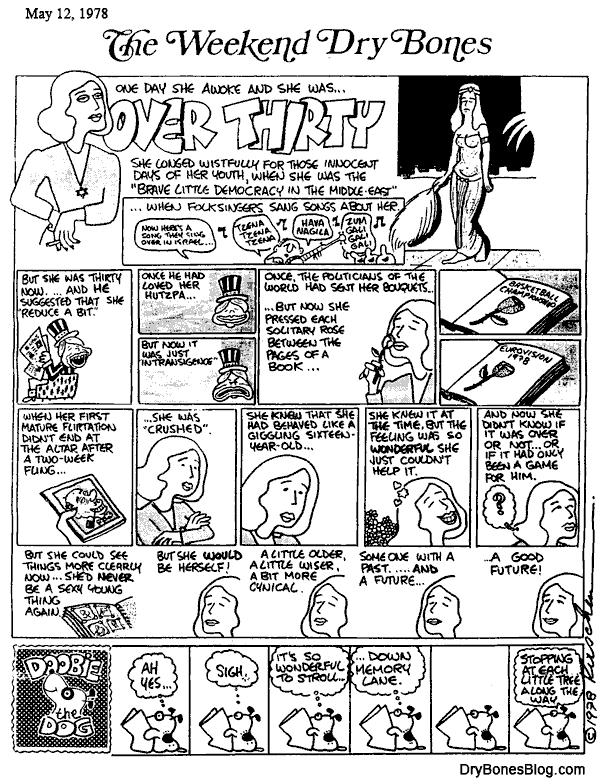 Dry Bones: Israel at 30 (1978)” Note that there are two images of Israel. The more “Westernised” business-suited version of herself (at 30) and her remembering her early “oriental” look. Also notice the take on Jimmy “one term” Carter, and the fact that we were both excited and nervous about how things were proceeding with Anwar Sadat, President of Egypt. At the bottom of the page Doobie the Dog adds his earthy and cynical comment in his own strip. אין לי ארץ אחרת אין לי ארץ אחרת אין לי ארץ אחרת בגוף כואב, בלב רעב |
|
| EIN LI ERETZ ACHERETEin li eretz acheret Gam im admati bo’eret Rak mila be’ivrit choderet el orkai el nishmati – Beguf ko’ev, belev ra’ev Kan hu beiti –Lo eshtok ki artzi shinta et panehaLo avater lehazkir la Ve’ashir kan be’ozneha Ad shetiftach et einehaEin li eretz acheret Gam im admati boeret Rak mila beivrit hoderet el orkai el nishmati Beguf koev, belev raev Kan hu beiti –Lo eshtok ki artzi shinta et paneha Lo avater lehazkir la Veashir kan beozneha Ad shetiftah et einehaEin li eretz aheret Ad shetichadesh yameha Ad shetiftah et einehaEin li eretz aheret Gam im admati boeret Rak mila beivrit hoderet el orkai el nishmati Beguf koev, belev raev Kan — hu beitiBeguf koev, belev raev Kan — hu beiti |
I HAVE NO OTHER COUNTRYI have no other country even if my land is aflame Just a word in Hebrew pierces my veins and my soul – With a painful body, with a hungry heart, Here is my home.I will not stay silent because my country changed her faceI will not give up reminding her And sing in her ears until she will open her eyesI have no other country even if my land is aflame Just a word in Hebrew pierces my veins and my soul – With a painful body, with a hungry heart, Here is my home.I won’t be silent because my country has changed her face. I will not give up reminding her And sing in her ears until she will open her eyesI have no other country until she will renew her glorious days Until she will open her eyesI have no other country even if my land is aflame Just a word in Hebrew pierces my veins and my soul – With a painful body, with a hungry heart, Here is my home.With a painful body, with a hungry heart, Here is my home.TOP |

Speech by the president of the Czech Republic at the reception held to celebrate Israel’s Independence DayMiloš Zeman, the president of Czech Republic, gave the following speech last Monday at a reception to celebrate Israel’s Independence Day. Many thanks to Gemini for the translation from the official text posted at the Czech government’s website. May 26, 2014
— Miloš Zeman, president of the Czech Republic, Hilton Hotel, 26th of May 2014 |
|

Independence Means Never Having To Say You’re SorryBy Tamar Yonah 06May2014 http://www.israelnationalnews.com/Blogs/Message.aspx/5706#.U3LmfYZxMxA Independence means never having to say you’re sorry.
(updated version from a blog I wrote in 2011)
Independence means never having to ask another country for arms and how we can use them.
Independence means never having to ask another nation where Jews can and cannot live.
Independence means never having to ask the U.N. to condemn terrorist attacks against us, because Israel would have already dealt out justice herself!
Independence means never having to apologize for hitting an anti-semitic, terror supporting, anarchist in the face with your gun.
Independence means never having to put a soldier on trial for cocking his gun while being threatened by enemies of the Jewish people.
Independence means never having to board a terrorist-supporting flotilla ship, where we arm our soldiers with paint guns, instead of meaning business.
Independence means not giving in to the Obamas and Kerrys of the world and releasing murdering terrorists out onto the streets for a goodwill gesture.
Independence means not having to cave into world pressure and cut yourself in pieces to carve out a terrorist state in your belly.
Independence means never having to ask another entity for permission… to exist. |
|
Latma’s song for Yom Haatzmaut – Please give me back my country! |
|
New initiative – 10 days of gratitude |
|
The Jews had every reason to fear genocide in 194805May2023 https://elderofziyon.blogspot.com/2023/05/the-jews-had-every-reason-to-fear.html There is an interesting thread by Yair Wallach, from the School of Oriental and African Studies (SOAS) in London, where he minimizes any threats made by Arabs towards Jews in 1948, and says that Jews exaggerate those threats in order to pursue their goal of Jewish supremacism:
It is true that in 1948, Zionist analysts felt that the war would go their way. It is probably true that some sober Arab leaders did not plan genocide against the Jews and “merely” wanted them to remain despised second class citizens as they had been forever under Muslim rule. But there is a huge leap in logic there to claim that there was no fear of another genocide, and an even larger leap to say that Jewish racism is keeping that myth alive in order to subjugate Palestinians.
First of all, there were threats – real threats – by Arab leaders promising a massacre of Jews that were recorded in major media, and not difficult to find at all. And they included at least one explicit call to throw Jews into the sea.
Here’s one genocidal threat from November 1947:
Another one was from Abdul Azzam Pasha, secretary general of the Arab League. Right before the UN partition vote on November 29, 1947, he publicly threatened not only the Jews of Palestine but all Jews in the Middle East.
Azzam Pasha is saying here that it is a point of pride for Arabs not to accept Jews as equals or victors. He proudly calls Arabs racists against Jews. So even if they wouldn’t have literally thrown all the Jews into the sea, all the Arab proposals of what to do with the Jews ensured that Jews would be forever subjugated.
Now, let’s look at what happened in the immediate aftermath of Azzam Pasha’s threat. As soon as the UN partition vote ended – -within hours – Arabs in Palestine started attacking every Jew they could find.
Not Haganah members. Jews.
And for months, until the Haganah started going on the offensive, Jews were murdered every day just because they were Jewish.
In the Palestine Post of December 31, 1947, we read about:
– 39 Jews massacred at a Haifa oil refinery when 2000 Arab employees ran amok after an apparent Irgun bomb killed six Arabs.
– A funeral procession to the Mount of Olives (for Jews previously murdered by Arabs) was raked by gunfire, killing one of the mourners and a British policeman.
– Two Jews were killed in separate events near Safed.
– One Jew was killed and several injured in sniping from Jaffa to Tel Aviv.
And these are only the stories about fatal attacks. There were many others that were either repulsed or “only” resulted in injuries.
This is what the paper was like every day. Jewish doctors killed in hospitals. Jews killed trying to help Arabs in trouble. Arab neighbors who had been friends with Jews turned around and started ululating in support of Iraqi troops in their villages. It was open season on Jews.
And Jewish civilians in the Arab world were also targets at that time – in Tehran and Yemen, in Bahrain and Syria, in Morocco and Egypt.
These are not myths. Azzam Pasha’s threats were coming true.
There was also at least one threat to throw Jews into the sea. In August, 1948, Muslim Brotherhood founder Hassan Banna told the New York Times, “If the Jewish state be-comes a fact, and this is realized by the Arab peoples, they will drive the Jews who live in their midst into the sea.” This is referring to the Jews of Arab countries, and the NYT added that “the Sheikh granted that this was a figure of speech,” but later in the article he explicitly said that if it wasn’t for politics, the Arab world would have “destroyed the Jews” in Palestine.
Wallach, whose Twitter feed has a number of statements disparaging those who are arguing with him because they are not real historians like he is, apparently found these explicitly genocidal statements against all Jews in the Middle East by Arab leaders too difficult to find. These are not “dubious” quotes – they are explicit calls to wipe out the Jews.
Coming only three years after the Holocaust, why wouldn’t Jews take these threats seriously? More importantly, how can anyone consider these public statements from Arab leaders, backed up by Arab actions on the ground, not genocidal? The only thing protecting the Jews in Palestine was the Haganah – without them they would have been defenseless. They weren’t defending themselves only from armies but from their neighbors. The Hadassah Hospital convoy massacre was not exactly an invitation by Arabs to work out their differences with the Jews.
Wallach’s evidence that some Arabs discussed how to not eradicate the Jews and only subjugate them may very well be true, but there was also counter-evidence – the leader of the Arab Higher Committee being a Nazi collaborator, the organized attacks against Jews the previous decade during the Arab Revolt, the 1929 pogroms against Jews throughout the land – these were all fresh memories. Maybe Arab leaders really were against genocide, and maybe they just felt it was not a practical solution, but the Arab leaders throughout the Middle East were inciting their people to murder Jews, whether in the media or speeches to mobs.
No one says that every Arab wanted to kill every Jew. But given the events that followed the partition vote, and the recent history of Arab attacks on Jews, it would have been stupid indeed for Jews to rely on the goodwill of Arabs to keep them safe.
It is true that things aren’t black and white. One can look at the relative strength of the armies and conclude that the Zionists probably wouldn’t be destroyed. But at the time, as political winds swirled around – the US changed its position about partition before Truman recognized Israel, the UN meetings on Palestine brought different news every day, the British stumbled between pretending to defend Jews to abandoning them — there was no room for the Jews to be confident. Thousands of Jews were killed during the war, and everyone knew friends and family who fell. The Jews had no less fear than the Arabs who fled – but the Jews had nowhere else to go. No matter how much Arab leaders insisted they weren’t antisemitic, it isn’t like the Jews of Palestine could expect safe passage or asylum in the neighboring states.
Wallach the historian also plays fast and loose in order to make his non-historic, purely political conclusion. What do these supposed “myths” of 1948 have to do with the “occupation” that began in 1967? If the “founding myths” were what animates Israel’s actions today, then shouldn’t they be treating Israeli Arabs the exact same as Palestinians?
He knows that Israeli Arabs having equal rights destroy his assertions, so he switches contexts to Palestinians who are not citizens, and jumps from 1948 to 1967.
Similarly, if Israel regards all Arabs as genocidal and violent, as Wallach asserts as a fundamental belief, then why did Israel make peace with Arab countries?
It is so sad when that reality gets in the way of a juicy, anti-Zionist theory.
Modern historians have the benefit of hindsight, and too often exhibit the proclivity to cherry pick the historic evidence that support their positions and ignore the inconvenient facts that say otherwise. But as we see here, being a historian does not mean being free of bias – on the contrary, it often gives the historian the hubris to discount or ignore the messy facts that don’t fit their theories.
(h/t Nurit Baytch for Hassan Banna quote) |
|

